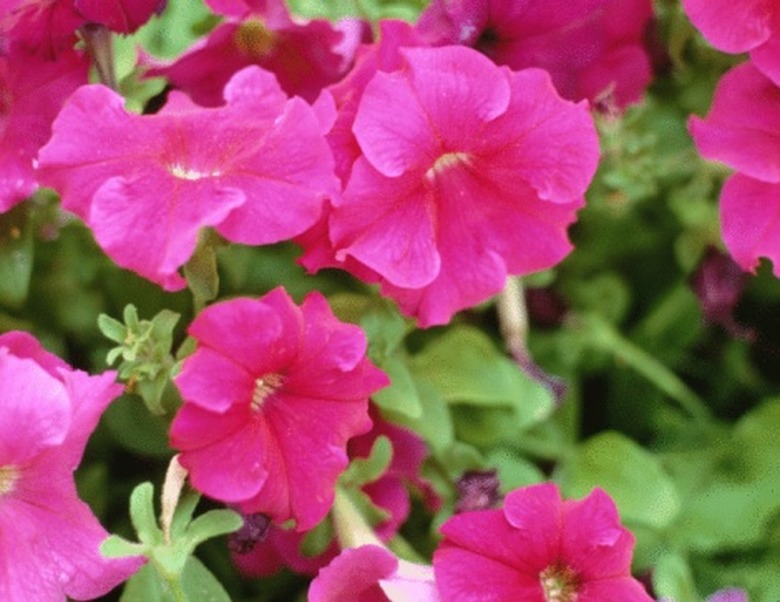What Is The Correct Way To Deadhead Petunias?
We may receive a commission on purchases made from links.
Deadheading petunias (Petunia spp.) helps these popular plants produce even more of the colorful blooms that gardeners love. Most petunias do not require deadheading to bloom continuously, but deadheading will help your plant produce even more flowers.
Tip
Deadhead petunias by pinching spent blooms with your thumb and forefinger. Pinch the flower along with the stem that attaches to the plant just above a leaf.
How to Deadhead Petunias
How to Deadhead Petunias
You want to remove dead blooms or blossoms that have faded to improve the quality of your flowers. By deadheading your petunias, you will prevent seed pods from forming and competing with the other parts of the petunia plant for food. This will encourage your petunias to be healthier.
If you'd rather use clippers, choose a small pair of pruning shears because petunias are typically short, compact plants. Remove any seed pods that are starting to grow beneath the flower. These may be hard to find, but look carefully and you'll see them.
If your petunia is growing at the end of a long stem, you may want to cut off most of the stem when you deadhead to give the plant a neater appearance. You don't have to cut the stem, and keep it in mind that the stem will need to grow back before another bloom grows.
Characteristics of Petunias
Characteristics of Petunias
Not all types of petunias require deadheading, but pruning them can help restore vigor to plants that look spindly. If your plant is leggy, deadheading will direct the plant's energy toward making new blooms instead of producing seeds. Large bloom varieties of petunias can especially benefit from deadheading.
Petunias are annuals in most parts of the U.S., but they're also tender perennials in U.S. Department of Agriculture plant hardiness zones 10 and 11. Petunias are popular because they provide the garden with a palette of colors, and they bloom from spring until frost.
Petunias range in height from 6 to 18 inches tall, and each plant spreads across the ground from 18 inches to 4 feet wide, depending on the variety. Blooms range from an inch wide on the tiny milliflora variety to 3 to 4 inches wide on the grandiflora variety. Most petunias are the in-between varieties of multiflora and floribunda.
Keeping Petunias Healthy
Keeping Petunias Healthy
Deadheading is part of keeping your petunias healthy, although there are other things you can do to have happy, healthy petunias that produce blooms all summer long. First of all, petunias like sun, so plant them in an area where they'll get at least five to six hours of sunlight. If you can, plant them where they'll get sunlight all day.
Make sure you plant petunias in well-draining soil. You don't have to have rich soil to grow petunias successfully, but well-draining soils amended with compost or another organic matter will help your petunias stay healthy. Fertilize with an organic flower fertilizer according to product directions.
Groundcover petunia varieties need a lot of water, but most petunias will be happy with a thorough watering once a week, soaking the soil to about 6 to 8 inches deep. Petunias make a wonderful addition to your perennial garden because they will produce flowers before and after your perennials flower, giving your garden color all summer long.
